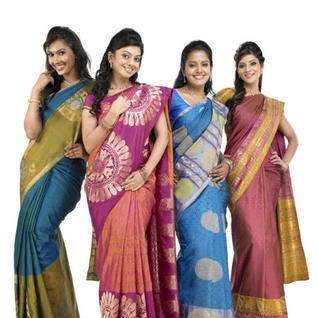
May 6, 2019: Sarees have been known for their glory and eye-getting colors everywhere throughout the globe. The decent variety of regions and style of dressing is perceived through individuals wearing Indian sarees. Its notoriety is with the end goal that even the general population who don’t have Indian roots are charmed by this six yard of texture which wraps ladies and influences them to look wonderful. Most of the people acknowledge that it is this fantastic material which focuses on the fineness of Indian women.
Indian designer and bollywood propelled sarees are straightforward yet flawless and are accessible in a charming blend. Each state and area has an assortment of sarees to offer the world. It’s extremely an unexpected that Indian sarees have taken the overall markets by a tempest. Different nations other than India has a culture of wearing saree like Sri Lanka and Bangladesh. However, it was Indian culture that left a check. With the rising significance of Indian sarees, there has been an expansion in the deals in India and furthermore around the world.
Variety of Indian Sarees
From Kashmir to Kanyakumari, the draping style, weaving, texture patern differs for Indian sarees. Each state has its own particular novel style which has been imparted over the ages. How about we take a gander at a couple of various styles:
1. Kasavu from Kerala:
Likewise called Settu saree, it was generally just a mundu (a dhoti), a blouse and a stole that went over the blouse. A ton of old women still keep this style alive. The Kasavu saree is a cutting edge form and is portrayed by a thick beautiful border, which is woven with threads of genuine gold. In any case, staying aware of the circumstances, it has enhanced to incorporate colors and artificial thread.
2. Kanjeevaram Silk Sarees from Tamil Nadu:
The queen of Indian sarees, Kanjeevaram sarees are produced using a customarily woven silk from the district of Kanjeevaram. The sarees are rich in fabric and color. They are rich, refined and elegant, across the board drape.
3. Banarasi sarees:
Banarasi sarees are among the best and finest sarees in India. They are outstanding for their unpredictable weaving style utilizing silver, gold and Zari threads. It is made utilizing the finest silk. The sarees are woven with silk and are enhanced with sensitive plans and substantial inscriptions. The vast majority of the plans are propelled from Moghal period, such as entwining flower, jhallara on the borders and themes. The gold work is woven and is utilized to make sensitive and wonderful outlines. Banarasi sarees are for the most part worn on celebrations and weddings. This saree can take up 15 days to a half year to make contingent upon the outline and example. Overwhelming gems is worn to supplement the wearer and the saree.
4. Kota sarees:
These sarees are known as ‘Kota saree’ as they are made in Kota, Rajasthan. It is additionally made at Muhammadabad Gohna, Uttar Pradesh and regions around it. Kota sarees are made from unadulterated cotton and silk threads. They have square like surface which are known as ‘khats’. They are finely woven and extremely light weighted. Initially these sarees were referred to as Masuria as they were woven in Mysore. Kota saris display independence with a little embroidery, making them absolutely first class.
5. Patola Sarees:
Patola sarees are usuall made from silk and are two fold ikat woven. They are made in Patan, Gujarat. These sarees are extremely costly and long time back was worn just by the ladies of imperial and boble families. The weaving technique for patola is a protected family custom by the weavers in Surat. Presently just three families exist that make these delightful and double ikat sarees. To make one saree it takes around a half year to one year. A patola saree is made by interweaving the warp and weft threads in such a way, to the point that they can oppose the color and the coveted patern is achieved. This procedure is performed for every one of the colors. These sarees are known for their delightful colors and geometrical style.
